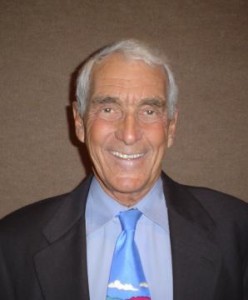By Jay Lehr, Ph.D., The Heartland Institute
It’s difficult to believe that the highest-esteemed and best-compensated of all medical doctors could be in short supply in the future. But in The Coming Shortage of Surgeons (Praeger, 2009), Drs. Williams, Satiani, and Ellison—three eminent surgeons and professors at The Ohio State University—make the case clearly, based on an exposition of warning signs not obvious to those of us outside the medical profession.
The book quantifies the increasing demand for surgeons as our population grows while a variety of constraints continue to hinder the supply. These include soaring tuition and resulting debt for medical students, surgeons’ demand for more control over their lifestyle, increasing malpractice premiums, early retirements, and the Balanced Budget Act of 1997, which froze all medical and surgical residencies at 1996 levels in an ill-thought attempt to lower costs.
The book is a data-driven, quantitative analysis of the workforce in question, covering every single surgical specialty. The authors explain, in clear language with supporting graphical data, which specialties will experience the greatest shortages, the potential impacts on patients, and the steps we can take to ensure we are not left without a surgeon when we need one.
Medical School as a Barrier
The book makes it clear the government, economists, and non-surgeon academics have miscalculated the number of surgeons who will be able and needed to care for a growing aging population. The authors use four separate mathematical models to calculate the number of surgeons we may be lacking by the middle of this century, breaking it down further according to surgical specialty. Their conclusions are difficult to argue with, and dire if true. They predict we will have 13 percent fewer surgeons than we need in this decade, and if no radical changes are made to our system we could be short 40 percent by mid-century.
The authors state the total enrollment of first-year medical students in the United States is 17,000 and has not changed in 25 years, while the population of the U.S. increased by 73 million. Two and a half times that number apply to medical school each year, and 25 percent of the 100,000 available residency posts are filled by physicians trained overseas.
There is obviously something wrong with this picture. Unless more spots in medical schools are made available and more money is given to assist with heavy student debt, the United States will be forced to outsource its medical education to developing nations, the authors state.
Miscalculation in Washington
The study of medicine is a difficult path. When students finish their residencies after about 12 years of training, they are between 28 and 35 years old and must pay down a median debt of between $145,000 and $180,000. Surgical residents earn only $10 to $14 an hour, far lower than most occupations requiring comparable training.
That must create a temptation for foreign-born students to leave. What will happen if professional opportunities for immigrant medical graduates start to improve in their home countries? It seems likely more will leave the United States, increasing the gap between U.S. needs and available surgeons.
Few understand the true costs of malpractice insurance in discouraging such surgeons from remaining in the United States. The authors produce data showing half of all malpractice suits are regarded as nuisance suits that result in no finding of fault and no award, although legal fees are still incurred. This is especially significant in the surgical area, and the authors recommend the establishment of special health courts which would follow in the long tradition of specialty courts in areas such as admiralty, bankruptcy, and workers compensation.
Lengthening Service
One solution the book promotes is to bring many retired or retiring physicians back into the workforce to reduce the coming shortage and increase the quality of care. The authors make the case that with increasing longevity the profession should consider raising its accepted retirement age to 70, barring, of course, any health problems that would prevent the safe practice of surgery.
The authors also recommend a reduction in the continuously increasing amount of time spent in residency programs, noting much of that time is spent on unrelated research projects or in teaching programs that take some load off the full-time faculty at a very low cost. They also laud the increase in the specialty of emergency room doctors for reducing requirements that other doctors be on call at all times.
Four things that must be considered in appraising the capability of surgeons, the authors state. A surgeon must have the physical capability to perform operations, the technical ability, and the ability to plan an operation. But the fourth consideration is perhaps the most important: the judgment to select patients for whom the goals of an operation make sense and for whom the operation can be a complete success. This attribute is most common among more mature surgeons.
Republished with permission from The Heartland Institute













